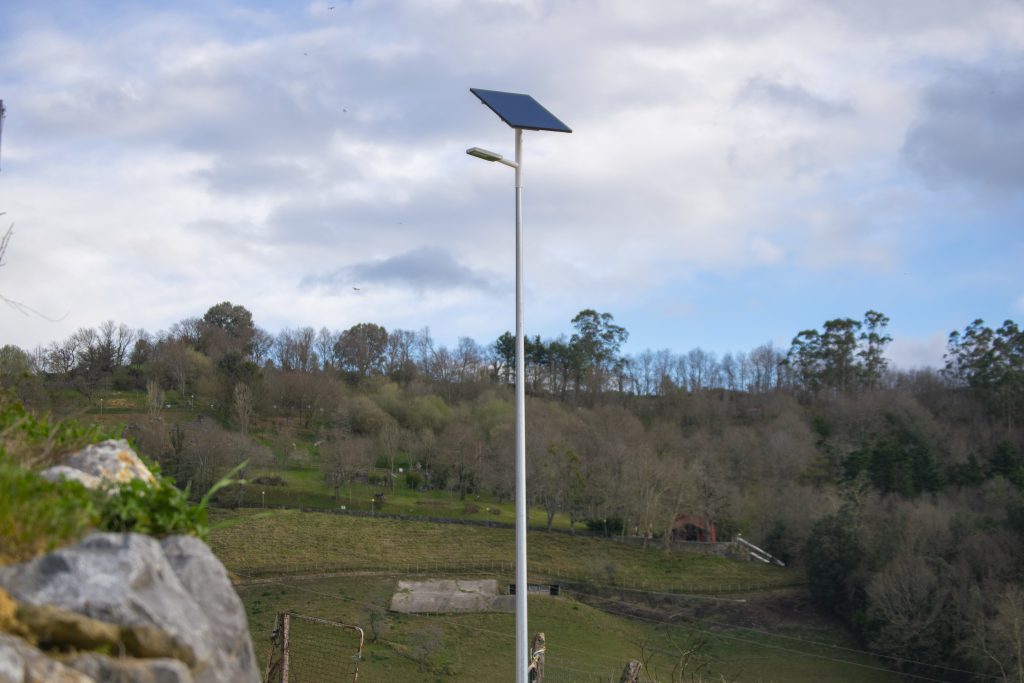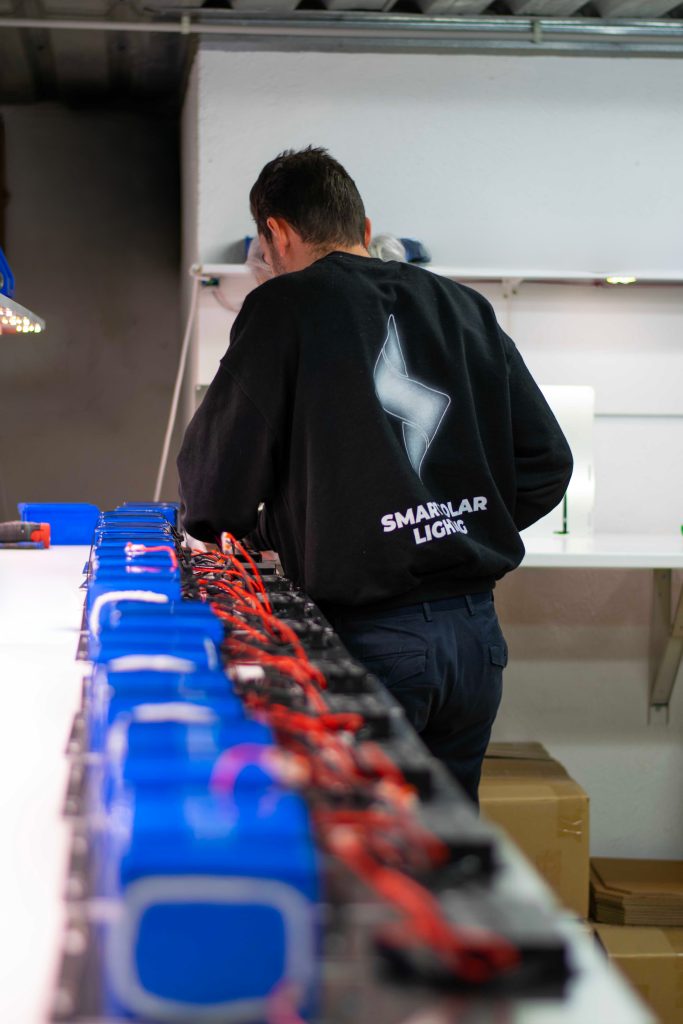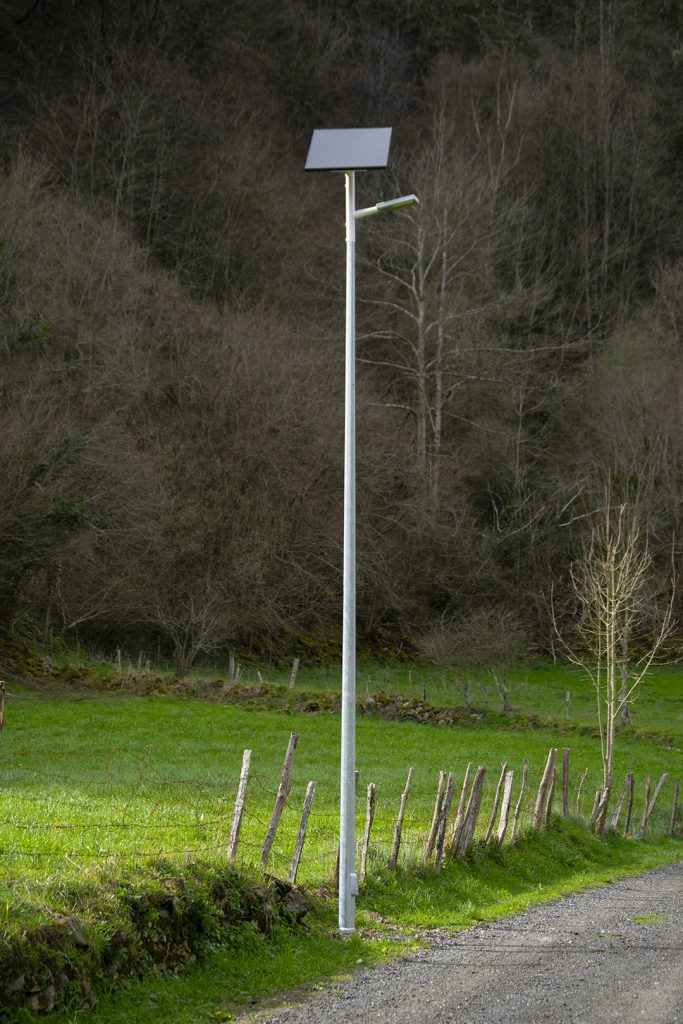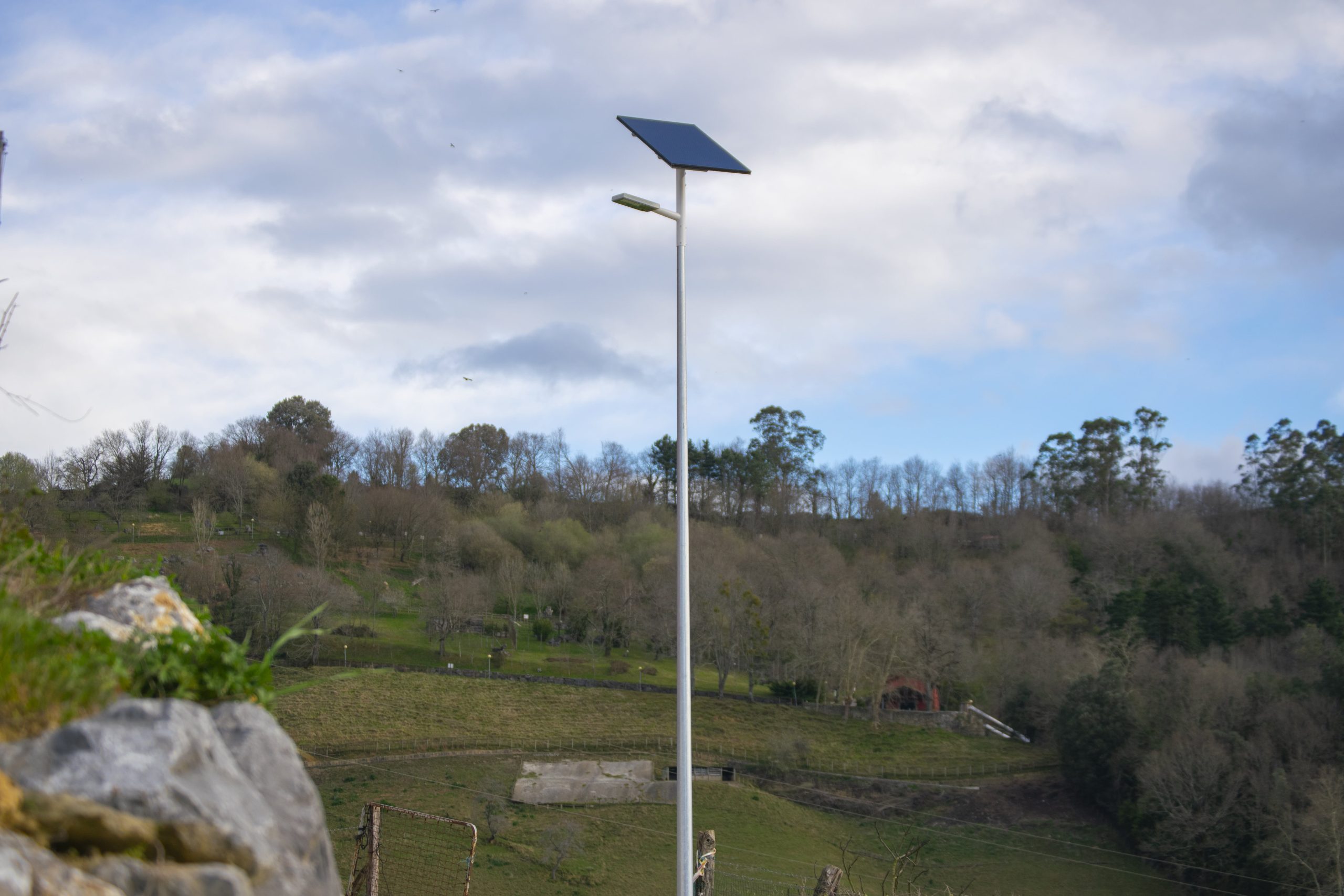May, 2024
What is solar lighting?
In the past 50 years, the lighting industry has hardly changed. Until solar lighting started to be implemented.
It is finally possible to light the planet in a sustainable and economical way.
In this post, we will explore how solar streetlights work, their components, benefits and the main applications that are transforming urban and rural environments.
A Little bit of History
The history of solar lighting is as fascinating as its technology.
Since modern solar panels were introduced in 1954 at Bell Laboratories, we have seen impressive improvements in the efficiency of these cells to convert light into electrical energy.
These improvements, coupled with more modern manufacturing techniques and economies of scale, have led to international growth in solar energy.
El primer patente de luz solar fue archivado por Maurice E. Paradise en 1955 , marcando el inicio de una era en la que la luz solar comenzaría a tener aplicaciones prácticas más allá de los paneles en tejados.
As of 2016, LED lamps consume only approximately 10% of the energy required by an incandescent lamp . This efficiency in the production of LED lamps has driven their adoption as a sustainable alternative to older electric lighting.
This breakthrough is crucial for solar lighting, as it complements solar technology by making solar streetlights much more efficient and practical.
This brief look into the past not only shows us where we came from, but also lightd the path to future innovations in the field of solar energy and green lighting.


Key Components of a Solar Streetlight
A solar street light includes several essential components:
- Solar Panel
- Battery
- Controller
- LED PCB
Solar Panel
The solar panel is the heart of the solar street light. It is composed of photovoltaic cells that have the ability to capture energy from the sun and convert it into electricity.
There are two main solar panel types, monocrystalline and polycrystalline, depending on efficiency and cost preference. During the day, the panel absorbs sunlight, generating electric current which is then transferred to the battery for storage.
Battery
The battery stores the energy captured by the solar panel. This stored energy is used to power the lantern at night or on cloudy days when direct sunlight is not available.
The most common batteries in these applications are lead-acid or lithium-ion batteries, which are preferred for their ability to store a large amount of energy and good durability in charge and discharge cycles.
Controller
The charge controller is critical to ensure battery longevity and efficiency.
This device regulates the flow of power in and out of the battery, protecting it from overcharging and over-discharging, which is crucial to maintaining long-term battery health. In addition, the controller can adjust the light's output power according to the battery's state of charge to maximize the efficiency of using stored energy.
LED PCB
A LED PCB is where the light emitting diodes are mounted.
LEDs are used because of their efficiency and long life. Compared to traditional lighting options, such as incandescent or halogen lamps, LEDs use a fraction of the energy to produce the same amount of light and can last up to 50,000 hours.
The PCB not only holds the LEDs, but also helps manage the heat generated, ensuring that the LEDs perform optimally.
Each of these components works together to create a self-contained, efficient lighting system that not only reduces reliance on conventional energy, but also minimizes environmental impact, making solar streetlights an increasingly popular choice for public and private lighting.
Also, solar street lights can incorporate advanced technologies such as motion sensors, temperature sensors and GPS to improve their functionality and efficiency.
How do solar streetlights work?
The lighting process begins with the collection of sunlight by the panel, which is converted into electrical energy and stored in the battery.
This system is designed to intelligently regulate energy use, ensuring that, even on days with low solar gain, the streetlights can operate efficiently.
At dusk, when the panel no longer picks up light, the luminaire knows it is night and turns on the LEDs.
Benefits compared to conventional lighting
Solar street lights are a innovative lighting solution with multiple benefits compared to conventional lighting:
- Sustainability
- Costs Redction
- Autonomy
- Acces to Remote Areas
- Fast and economic instalaiton
- Light Pollution Reduction
1.Sustainability
Solar street lights use solar energy, a completely clean and renewable source. This means that, unlike conventional lighting that often relies on electricity generated from fossil fuels, solar lighting does not deplete non-renewable natural resources.
Also, this reduced reliance on polluting energies significantly reduces the carbon footprint of public lighting.
2.Costs Reduction
One of the most attractive benefits of solar street lights is the considerable decrease in both electricity and maintenance costs.
As they are an autonomous solution, solar street lights eliminate electricity consumption costs and, thanks to the durability and low maintenance requirements of components such as LEDs and long-life panels, operating costs are drastically reduced as well.
The instalation of this solutions is also cheaper, we will go into details later.
3.Acces to Remote Areas
A key benefit of solar streetlights is their ability to be installed in locations that lack access to the power grid.
This makes them ideal for illuminating rural areas, remote roads and regions where electrical infrastructure is non-existent or difficult to implement.
Solar energy brings light to these places, improving the safety and life quality of their inhabitants.
Fast and Economic Instalation
The installation of solar street lights is remarkably fast and non-intrusive. It does not require cable trenching, complex connections or extensive civil works.
This not only reduces cost and installation time but also minimizes the impact on the immediate environment.
They can be placed flexibly and strategically without relying on proximity to existing infrastructure.
5.Light Poluiton Reduction
Solar streetlights are designed to be light efficient, thanks to advances in LED technology.
LEDs can be configured with lenses that focus light more precisely where it is needed, reducing unnecessary scattering that contributes to light pollution. This is especially valuable in areas where night sky preservation is a priority, such as near observatories or nature reserves.
These benefits make solar lighting a superior option in terms of efficiency, environmental impact and long-term costs, promoting a more sustainable and affordable approach to public and private lighting.
Main Solar Streetlight Applications
Solar lighting has become a preferred solution for:
- Street lighting
- Urban lighting
- Remote Areas
- Parking lighting
Street lighting
On the roads, visibility is crucial for road safety.
Solar street lights provide efficient and constant illumination that significantly improves safety by adequately illuminating roads, reducing the likelihood of accidents at night.
Their installation on road sections without access to the power grid is especially useful, providing light in areas previously dangerous due to lack of illumination.
In addition, their ability to operate independently of the power grid makes them resistant to interruptions due to power outages, ensuring that roads remain illuminated under any circumstances.
Urban lighting
Developments benefit greatly from solar lighting because of its ability to integrate aesthetically with the environment while offering functionality.
These streetlights not only improve safety by preventing criminal activity and accidents, but also reduce the costs they require to develop. Creating safe and attractive environments for residents and visitors.
Solar lighting in these areas can be designed to complement the architecture and landscaping, making the spaces not only safe but also visually appealing.
Remote Areas
In remote areas where electrical infrastructure is either non-existent or prohibitively expensive to install, solar streetlights are the perfect solution.
They provide essential lighting for the safety and comfort of communities in these areas, facilitating after-sunset activities and improving life quality .
The non dependence from the power grid means that communities can enjoy the benefits of modern lighting without the need for major infrastructure investments.
Parking lighting
Parking lots, both in urban areas and in commercial establishments, are another ideal setting for solar lighting.
Lighting in these spaces is crucial for vehicle and pedestrian safety.
Solar streetlights ensure that these areas are well lit, lowering crime and significantly reducing the risk of accidents.
Furthermore, the installation of solar street lights in parking lots is a statement of environmental responsibility on the part of companies, contributing to a greener and more conscious corporate image.
In summary, solar lighting is not only versatile and efficient, but also adapts its benefits to the specific needs of each of these environments, providing sustainable and effective lighting solutions that improve safety, aesthetics and accessibility in various types of locations.

Conclusion
Solar lighting represents a breakthrough in the way we think about and use energy for lighting.
With each solar streetlight, we are not only illuminating a space, but also taking a step towards a more sustainable future.
The possibilities offered by these technologies are immense and their implementation continues to expand, leading the way to a brighter, greener world.

